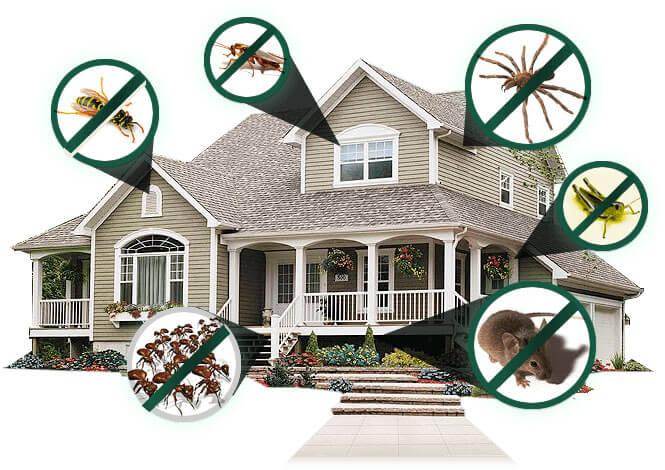Reliable A1 Bed Bug Treatment in Charlotte - Safe and Proven Methods
Reliable A1 Bed Bug Treatment in Charlotte - Safe and Proven Methods
Blog Article
Bed Insect Therapy Malfunction: Comparing Chemical Vs. Non-Chemical Solutions
In the world of parasite control, specifically when dealing with the consistent concern of bed pests, the choice in between chemical and non-chemical treatment services can be a critical one. Both approaches use distinctive advantages and drawbacks, influencing variables such as efficiency, safety factors to consider, and overall cost. By checking out the nuanced information of each approach, a clearer understanding of which course to go after in resolving a bed insect problem can be achieved.
Effectiveness of Chemical Treatments
Chemical treatments for bed insect infestations have been widely identified for their powerful and quick efficacy in removing these parasites. When considering the efficiency of chemical therapies, it is crucial to understand that they can provide a detailed and fast service to a bed pest issue. Specialist pest control operators typically depend on pesticides to target bed insects at different phases of their life cycle, consisting of adults, nymphs, and eggs. These chemicals typically function by interfering with the bed bugs' nerve system, leading to paralysis and eventual death.
In addition, chemical therapies have the advantage of supplying residual impacts, suggesting that they can continue to remove bed insects also after the first application. This recurring activity is especially helpful in combating any type of prospective re-infestations. Furthermore, the quick action of chemical treatments can bring alleviation to individuals facing serious bed bug infestations, allowing them to regain control of their living spaces promptly.
Security Interest In Chemical Solutions
When making use of chemical services for bed insect treatment is making certain the safety and security of residents and the atmosphere,One crucial facet that requires careful consideration. While chemical therapies can be efficient in getting rid of bed pests, they might position risks otherwise dealt with appropriately. One of the primary safety and security concerns with chemical remedies is the prospective harm they can create to human health. Exposure to certain chemicals utilized in bed insect therapies can lead to breathing concerns, skin irritability, or various other damaging reactions, especially in individuals with pre-existing problems or level of sensitivities. Additionally, incorrect application or dosage of chemical pesticides can result in hazardous deposits lingering in the treated location, presenting long-term health dangers to occupants.
Moreover, the ecological effect of chemical solutions is another significant factor to consider. Some pesticides made use of in bed bug treatments may be unsafe to helpful pests, wildlife, and environments if they leach right into the soil or water supply. It is important to make use of chemical therapies judiciously, complying with safety and security standards, and taking into consideration less hazardous alternatives to reduce these threats and make sure the secure and effective management of bed bug infestations.
Advantages of Non-Chemical Strategies
Considering the potential safety and security problems and ecological influence linked with chemical remedies for bed insect treatment, discovering non-chemical methods offers an encouraging choice with several distinct advantages. Non-chemical approaches supply a safer option for homes, particularly those with youngsters, pet dogs, or individuals sensitive to extreme chemicals. These techniques remove the dangers of exposure pest control expert to hazardous compounds, lowering the capacity for damaging health impacts. Moreover, non-chemical therapies are eco-friendly, as they do not add to air or water air pollution, making them a sustainable choice for pest control.
Furthermore, non-chemical remedies can be reliable in targeting bed bugs, including hard-to-reach locations where chemical therapies might not penetrate - A1 charlotte bed bug exterminator. Methods such as heat therapy, vacuuming, steam cleansing, and mattress encasements provide comprehensive elimination without the usage of hazardous chemicals.
Limitations of Non-Chemical Treatments

Additionally, non-chemical therapies usually need several applications to attain effective elimination. This can be lengthy and may not always assure total removal of all bed insects and their eggs, specifically in hard-to-reach or concealed places.
In addition, the success of non-chemical treatments heavily depends on appropriate implementation and thoroughness, which can be challenging for people without expert know-how. Inadequate application of non-chemical techniques might lead to incomplete removal, resulting in consistent problems and the requirement for additional therapies.
Consequently, while non-chemical treatments have their benefits, it is important to acknowledge these constraints and consider them when determining one of the most efficient strategy for taking care of bed insect infestations.
Price Comparison: Chemical Vs. Non-Chemical Options
Offered the restrictions associated with non-chemical therapies, a vital aspect to assess in the context of bed insect monitoring is the expense comparison between chemical and non-chemical alternatives. In contrast, non-chemical therapies like heat treatment or steam can be extra expensive, with expenses ranging from $1,000 to $6,000 for an entire home. While the preliminary cost of chemical therapies might seem reduced, multiple therapies may be called for to fully get rid of the infestation, potentially increasing the general price.
Conclusion

Thinking about the possible safety problems and environmental effect linked with chemical solutions for bed insect treatment, discovering non-chemical approaches provides an encouraging alternative with a number of unique benefits.Offered the constraints connected with non-chemical treatments, an important facet to assess in the context of bed insect monitoring is the price comparison between chemical and non-chemical choices. In contrast, non-chemical therapies like warmth treatment or vapor can be more expensive, with expenses my link varying from $1,000 to $6,000 for a whole home. While the preliminary price of chemical therapies might appear reduced, multiple treatments might be called for to totally eradicate the invasion, potentially increasing the total expense.In verdict, when contrasting chemical and non-chemical bed insect treatment choices, it is necessary to take into consideration performance, safety and security, benefits, constraints, and price.
Report this page